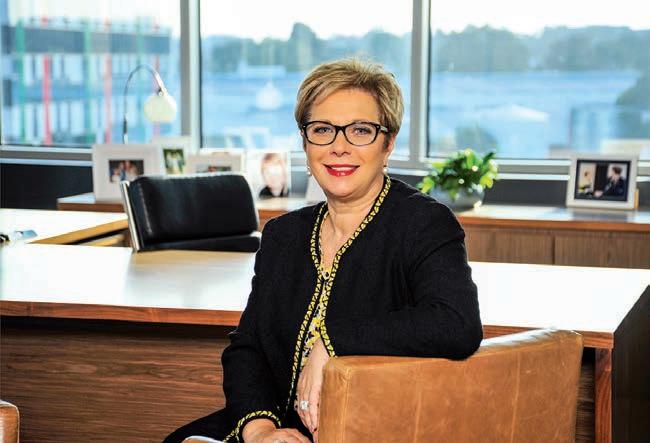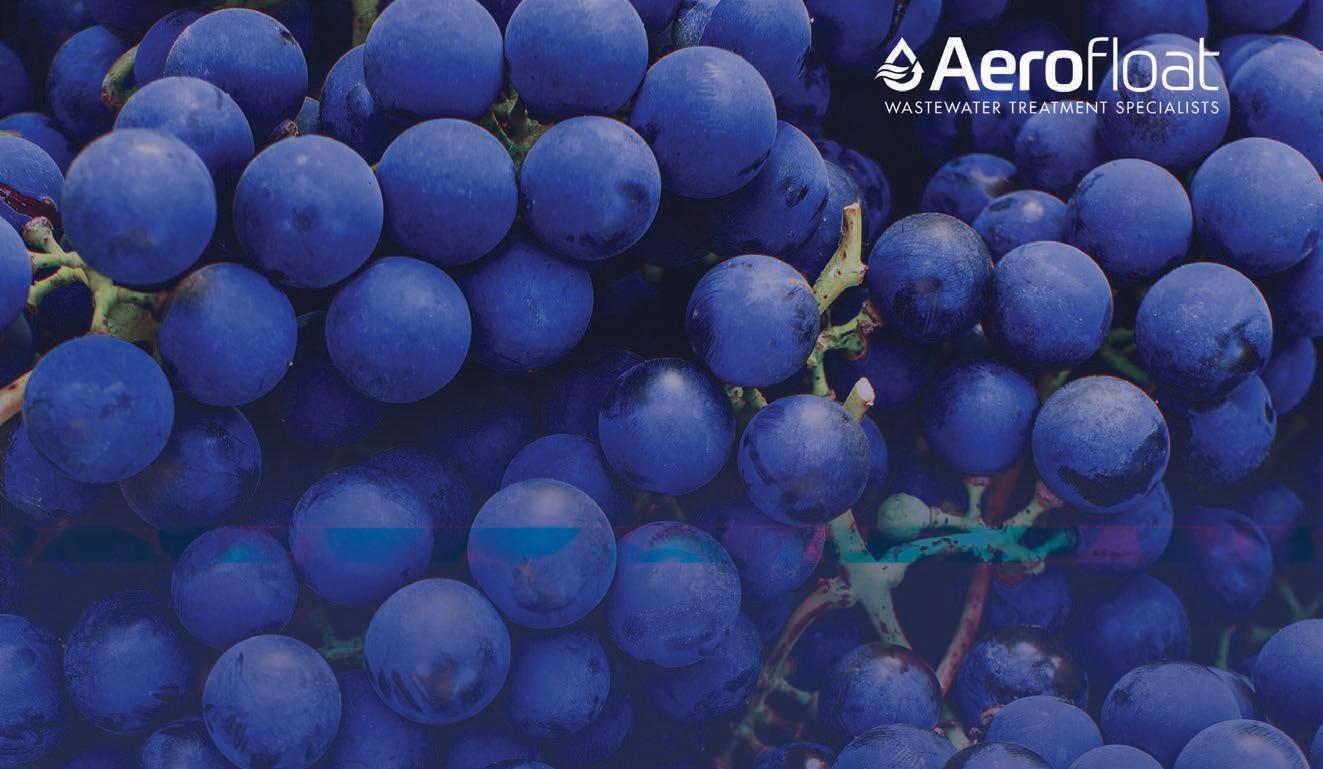
7 minute read
Key speakers from GS1 speak about the importance of 2D barcodes
Don’t get left behind by 2D barcodes
Food & Beverage Industry News speaks to GS1 Australia executive director and CEO, Maria Palazzolo and director of retail, Andrew Steele, about digital transformation and why collaboration among industry is the key to the widespread implementation of 2D barcodes.
GS1 Australia is a leading standards and service provider for over 20 industry sectors. Having introduced barcoding to Australia in 1979, the company now assists over 22,000 companies in becoming more efficient using the global GS1 system. GS1 Australia advises and supports businesses, associations and industries on their supply chain challenges through administering global standards to achieve world’s best practice. As a member-based, not-forprofit organisation, GS1 Australia supply and manage the GS1 system of identification, global data standards and barcodes as well as recommend solutions through their services to members. Most recently, their focus has been centred on supporting companies in their digital transformation journey. This is being brought on for many companies in the food and beverage industry for various reasons, such as changing consumer behaviours stimulated by the COVID-19 pandemic. According to GS1 Australia executive director and CEO, Maria Palazzolo, digital transformation is likely on every organisation’s agenda in the same way traceability is. The ability to integrate it in a seamless way is the challenge.
“You have a very well-informed consumer that isn’t satisfied anymore with just knowing what product they have brought, they want more visibility about all aspects of the product like, the sustainability of the product and its packaging, allergen information, expiry and use-by dates etc; they want to be better informed about the safety of the products they purchase. “What you’ve got is this alignment of companies looking at digital transformation and at the same time dealing with complex supply chain issues and consumer demand for more specific product information, all of which has become more pronounced through COVID”.
The solution
In the plight of the COVID-19 pandemic, consumers also rapidly became more comfortable with QR codes, a 2D barcode technology. This presented an opportunity for both brand owners and retailers to enable the transfer of more information to consumers. Retailers were also searching to better utilise data to manage their products within the supply chain. Palazzolo said many items are dumped each year that are past their use-by dates because systems are not in place to capture the data prior to the products’ expiration. “One could ask the question as to why an existing technology, available today, is not more widely adopted to help solve some of these supply chain issues. The potential benefits are well documented and ready to be realised” One example is Woolworths, which has a vision to roll out 2D barcodes across perishable categories and eventually into its ambient products. “Woolworths have been the trailblazers. They look through three lenses: the voices of the customer, the supplier, and their staff,” GS1 Australia director of Retail, Andrew Steele said. “They identified a number of drivers in listening to those three voices and the recurring theme was around waste reduction, better food safety, and better traceability information.” By identifying these drivers, Woolworths saw that 2D barcodes would provide more visibility and granular information, as well as prevent stock being dumped. “Woolworths has already recorded up to 44 per cent reduction in stock dumps due to use-by and best before dates for products with 2D barcodes,” Steele said. “The other thing is, if you have a barcode with a batch number that can be tracked and you have to do a recall or withdrawal, it can now be more targeted and you don’t have to pull everything off the shelf, which is important to mitigate the costs of recalls. That is a great opportunity for
GS1 is providing expert advice and services around the implementation of 2D barcodes across the industry.
suppliers, and it is going to open a whole new world of possibility.” Palazzolo informs all GS1 Australia members and companies to learn from history when the linear barcode was introduced 50 years ago. “That was a perfect situation where retailers and manufacturers were looking for some kind of solution,” she said. “They all came together and did something that had never happened before – everyone realised that collaboration was needed. This ultimately resulted in the adoption of one single barcode standard for all point of sale around the world, which meant equipment and software suppliers were able to build their systems based on a single standard.” By collaborating to introduce the linear barcode we are all familiar with today, many problems were solved. But while Palazzolo endorses collaboration to progress digital transformation now, she feels that it should be done for the right reasons, “to avoid the ensuing chaos”.
GS1 CEO Maria Palazzolo is helping the industry adapt to digital transformations.

“We need to avoid the potential chaos that is caused when companies go their own proprietary way. And just as industry collaborated 50 years ago to agree on standardisation for the greater good, so we should be doing the same today,” Palazzolo said. “It’s not about having a competitive advantage, but about standardising in an agreed practical way for the benefit of all, consumers, brand owners and retailers around the world.” Also, if a supplier requires a barcode with additional data, the need to move away from pre-printed linear barcodes and towards printing capabilities for the 2D barcode will create a paradigm shift. Steele’s view is that industry collaboration will be the key to adapting and making the widespread adoption of 2D technology work.
“For example, Woolworths has discussed with other retailers and don’t see it as a competitive advantage, but the way ahead for everyone,” he said. “This is where the industry needs to come together and collaborate. If I am a supplier and I need to provide new 2D barcodes for one client and linear barcodes for another, then all of a sudden, we need two barcodes on every product, which creates an added cost. So, there will be a transition period with two barcodes on some products; that is just the nature of moving into new systems.”
Next dimension in barcodes
The beauty of new-age barcoding systems such as 2D is that enormous amounts of data can be embedded to provide greater efficiencies for retailers and give consumers the confidence to make well-informed decisions about a product. This also amplifies more transparency in the relationship between the customer and the brand. “The data and how it’s used and the value that it brings to retailers, for their supply chain and consumers, has become increasingly important,” Palazzolo said. However, the barcode itself is only a carrier of data. Manufacturers first need to have practices in place that can collect the appropriate data, including the use-by date, batch number, manufacturing date and promotions. Effectively, identifying this would give manufacturers the information needed to mitigate the risk of taking the product off the shelves, like Woolworths has done. “The key is identifying what problems they are trying to solve and that should then determine the data they embed in the barcode,” Palazzolo said. “It will also give consumers more trust in a transparent product.” GS1 Australia develops the standards for 2D barcodes and aims to educate industries in implementing and integrating these solutions into their businesses. This focus on collaboration has led them to the upcoming AUSPACK 2022 event, where they will have the opportunity to demonstrate 2D barcode technology first-hand. “We will have two as a focus at AUSPACK, one being the GS1 Data Matrix – which is the 2D barcode that Woolworths is scanning – the other one is a GS1 Digital Link,” Steele said. “I am also going to be on a panel with one of the key people from Woolworths who has been involved in the project since day one, and other solution providers. Any food or beverage product that has a use-by or best before date and a batch number are right in the scope for 2D barcodes. It is still early days, but people are seeing the major benefits.” Palazzolo expresses the hope that the event will give people the opportunity to see what they need to consider before implementing 2D barcodes in their own operations. “The ambitious date of 2027, where retailers around the world need to be ready to scan 2D barcodes on products they sell, isn’t as far away as it seems,” Palazzolo said. “There is so much to do and so much that needs to be decided; there is a whole program that needs to take place on communicating internally and externally. In my experience, every rollout of a new major program requires somebody within an organisation to champion the cause, and that helps to ensure that the project progresses and that all relevant parties are included in the decisions that need to be made. The question of transitioning to 2D barcodes is not only about why, but also of when”. F
Visit www.gs1au.org/2d-barcodes
一䔀䔀䐀 吀伀 刀䔀䐀唀䌀䔀 夀伀唀刀 䈀伀䐀 䈀䤀䰀䰀㼀












